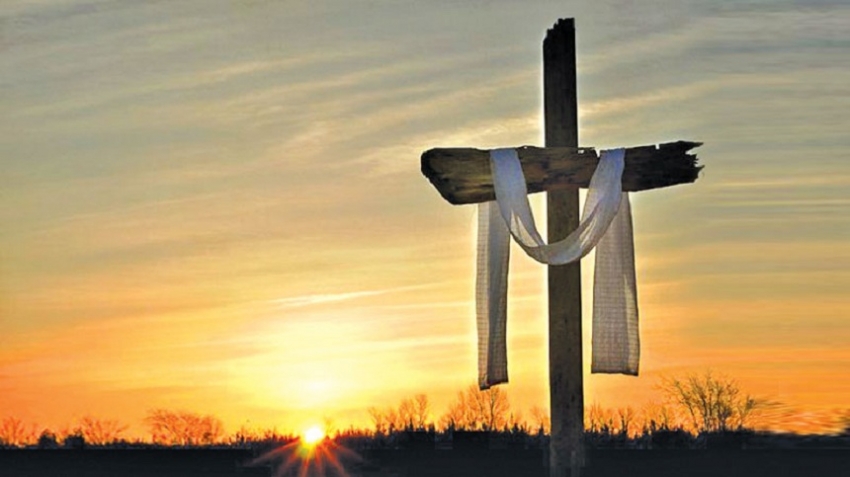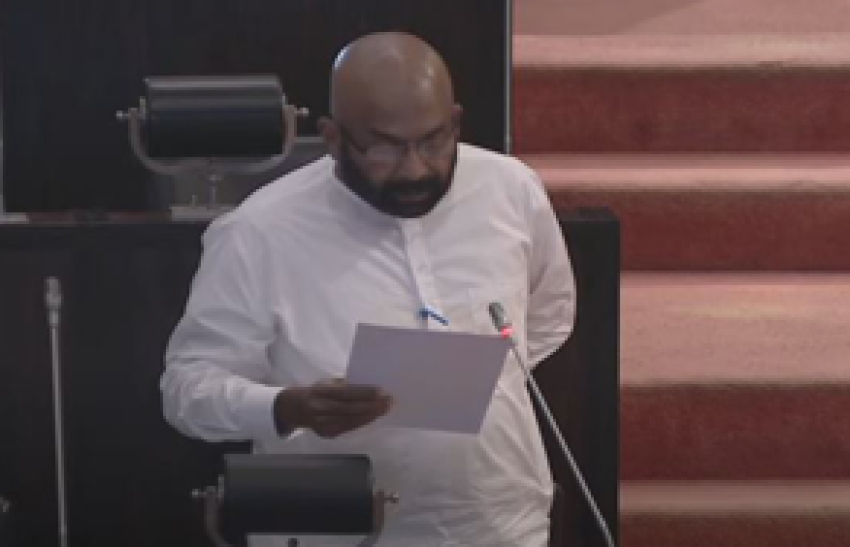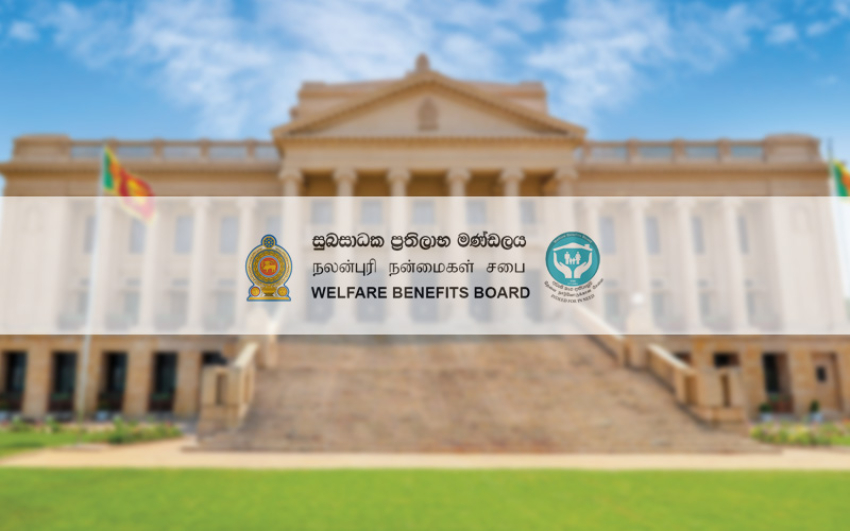‘Lord, by thy Cross and Resurrection thou hast redeemed the world' - perennial symbol of Christ’s death and resurrectionThe cross is the most famous symbol of Christianity. Most Christians have crosses in their homes. Many wear a cross around their necks. Some of these are made of precious metal and embellished with jewels. The beauty of these devotional objects may emphasize the glory and the victory over death Christ won on the cross but too often representations of this central symbol of faith are regarded primarily as decorative, and its true message is lost. Season of Lent is the most appropriate time to penetrate the true meaning of this sacred image.
In Roman times, the cross was an instrument of torture and public humiliation and criminals were put to death on crosses. The cross symbolizes sacrifice, suffering, repentance, solidarity, and exclusion. While the cross has been around long before the advent of Christianity, for Christians, the cross became a symbol only after Jesus’ death and resurrection.
The crucifix, a cross with the figure of Jesus Christ attached to it is a common Catholic symbol that is often placed on or above the altar where the Eucharist is celebrated. According to the Bible Christ died on the cross to redeem humanity thus the crucifix becomes a symbol of sacrifice and atonement. Crucifix also is the focal point of Catholic belief.
Crucifixes are always found in Catholic churches and chapels over the altar and are always carried in liturgical processions. They are a customary fixture in every room and office of Catholic institutions such as schools, hospitals and on the walls of Catholic homes. This form of the Cross of our Lord adorns Rosaries, prayer-books, private altars, vestments, and many other devotional articles; also the Pectoral Cross worn by a bishop as a sign of office. The Pope's ceremonial staff also has a crucifix attached to it unlike an ordinary bishop's staff, and is formed like a shepherd's crook.
Veneration of crucifix
The crucifix is venerated by the faithful in a special ceremony on Good Friday. On Good Friday, the entire Church fixes her gaze on the Cross at Calvary. All Christians try to understand at what cost Christ has won our redemption. In the solemn ceremonies of Good Friday, in the Adoration of the Cross, in the chanting of the 'Reproaches', in the reading of the Passion, and in receiving the pre-consecrated Host, each and every member of the church contemplates their own death to sin in the death of Christ.
The Church is stripped of its ornaments, the altar bare and with the door of the empty tabernacle standing open as if in mourning. In the fourth century the Apostolic Constitutions described this day as a 'day of mourning, not a day of festive joy,' and this day was called the 'Pasch (passage) of the Crucifixion.'
The liturgical observance of this day of Christ's suffering, crucifixion and death evidently has been in existence from the earliest days of the Church.
Church does not celebrate Mass on this day, but the service of Good Friday is called the Mass of the Pre-sanctified because Communion (in the species of bread) which had already been consecrated on Holy Thursday is given to the people.
Traditionally, the organ is silent from Holy Thursday until the Alleluia at the Easter Vigil, as are all bells or other instruments, the only music during this period being unaccompanied chant.
The omission of the prayer of consecration deepens our sense of loss because Mass throughout the year reminds us of the Lord's triumph over death, the source of our joy and blessing. The desolate quality of the rites of this day reminds us of Christ's humiliation and suffering during his Passion.
Christians glorify the Cross as a sign of Christ's resurrection and victory over sin and death, at the same time they remember that the Cross of Jesus' crucifixion is an emblem suffering and shame the Son of God endured for us.
During the Easter Triduum (Holy Thursday, Good Friday and Easter Sunday) every Christian should contemplate the redeeming mystery of the Cross. The image of the Cross may help each one to learn more fully the meaning of Christ's sacrifice and how to imitate His example. The church also recites prayers which focus on the Crucifixion hoping for atonement for our own sins and the many grave sins of the present society.
Glorious resurrection
The somber thoughts of the Lent and Good Friday are banished on the greatest day of the year for Christians which is Easter Sunday. As St. John Chrysostom announces in this famous Easter sermon, “Let none fear death, for the death of our Saviour has set us free. He has destroyed it by enduring it. He spoiled the power of hell when he descended thereto. Isaiah foretold this when he cried, 'Death has been frustrated in meeting him below!' It is frustrated, for it is destroyed. It is frustrated, for it is annihilated. It is frustrated, for now it is made captive. For it grabbed a body and discovered God. It took earth and behold! It encountered Heaven. It took what was visible, and was overcome by what was invisible. O Death, where is your sting? O Death, where is your victory? Christ is risen, and the demons are cast down. Christ is risen, and life is set free. Christ is risen, and the tomb is emptied of the dead. For Christ, having risen from the dead, is become the first-fruits for those who sleep. To Him be glory and power forever and ever! Amen. Alleluia! Alleluia! Alleluia!"
Easter is the celebration of Christ's resurrection from the dead. It is celebrated on Sunday, and marks the end of Holy Week, the end of Lent, the last day of the Easter Triduum and is the beginning of the Easter season of the liturgical year.
Since Easter represents the fulfillment of God's promises to mankind, it is the most important holiday on the Christian calendar. Most Catholics attend Easter Vigil at midnight where many sacraments are performed, such as baptisms and Rite of Christian Initiation for Adults, during the Mass.
Pagan roots
Easter is also closely connected to Christian faith and follows some practices of the early pagan religions. Easter history and the rituals and traditions that are practiced today originally comes from pagan symbols, and talks about the stories of ancient Goddess Ishtar to Easter bunny and Easter eggs. Easter celebrations symbolize the lightening era and the beginning of life.
Easter is the name of a Saxon goddess, who is also known by other names like Oestre or Eastre, and in Germany she is called Ostara. Goddess of the dawn and the spring, Ostara term comes from “dawn” or the luminous light making the eastern sky bright. Ostara is also the fertility Goddess and the "female hormone" estrogen is associated to the name. She marks the end to chilling winter and brings days brighter and longer after the vernal equinox. Thus, symbolically Easter also indicates passion for new life.
The rabbit is symbolically associated with prosperity and is the sacred animal, thereby having relevance as “Easter bunnies”. Easter eggs are again the symbol of fertility, and are commonly seen during the spring festivals of Ostara. During Easter, one prime decoration aspect is the brightly coloured eggs, chicks and bunnies are also used to indicate Ostara's blessings for abundance.
Easter is also associated with the Jewish holiday of Passover, as well as the exodus of the Jews from Egypt, as described in the Old Testament. Their religious observance of Passover included sacrificing unblemished lambs, just as the Israelites had done when they painted their doorposts with the lambs' blood the actual night of Passover - when Moses led God's people out of Egypt.
The sacrificial lamb was a significant part of sparing the lives of the Israelites on Passover and the lamb was the pinnacle of the Passover meal. Easter and Passover have a special relationship for many reasons.
Jesus became the "lamb without blemish" as he sacrificed his life for the sins of all who believe in him - to bring them into right relationship with the Father. Just as the Israelites celebrate freedom from their slavery to the Egyptians as they celebrate Passover, Christians celebrate the victory over sin and death signified in Jesus' death and resurrection. Jesus said the new covenant between God and his people was "an agreement confirmed with my blood, which is poured out as a sacrifice for you."
Traditional Easter family activities vary by region. In the United States, children often hunt for Easter eggs, which are often brightly-dyed hard boiled eggs, though they can be plastic eggs filled with candy or small denominations of money.
Candy is a traditional gift for Easter as children often break their Lenten fasts with sweets.
Adults tend to share bouquets of flowers, greeting cards, and may gather for a family meal.
Such celebrations are often secularized and focused on children and family rather than the religious aspect of the holy day. Following Easter Sunday, the season of Easter begins and lasts for seven weeks, ending with Pentecost.
After all Easter is a time of renewal and awakening. Let this spring season, especially this time that we celebrate Easter, be a time of revival of your dreams, relationships, life and above all your relationship with Christ.
Email Facebook0 Twitter google_plus Pinterest0 WhatsApp Viber Facebook Messenger




















